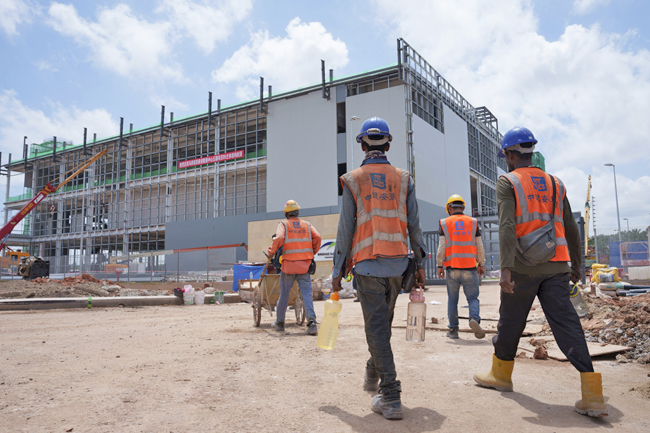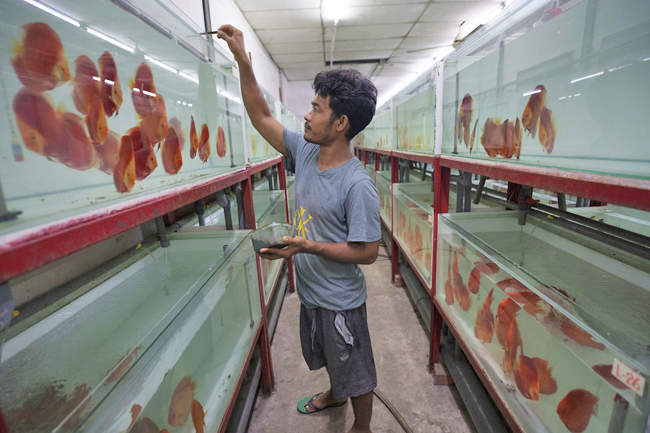AP – Winson Lau always had contingency plans. But he wasn’t prepared for data centres.
Lau relies on water and electricity to operate his thriving export business in Malaysia’s Johor province, where he raises a kaleidoscope of tropical fish in rows of aquariums, including albino fish with red spots that can fetch up to USD10,000 from collectors. His contingency plans in the event of an outage involve an intricate system of purifying wastewater through friendly bacteria and an alarm system to quickly switch to backup power.
But these measures can’t compete with the gigantic, power-guzzling and thirsty data centres being built in Johor. The province is on track to have at least 1.6 gigawatts of data centres at any given moment from nearly nothing in 2019, making it the fastest-growing data centre market in Southeast Asia, according to a report published in April.
Data centres are large, windowless buildings filled with racks of computers that need lots of electricity. To prevent overheating, they rely on energy-intensive air conditioning systems using pumped water.
Increasingly used by tech companies for running artificial intelligence (AI) systems, the power demand from future facilities in Malaysia may rise to over five gigawatts by 2035, according to researchers at Malaysia’s Kenanga Investment Bank. This is more than half of Malaysia’s entire renewable capacity in 2023. Over 95 per cent of the energy available to Malaysia in 2022 was from fossil fuels, according to the International Energy Agency. The country is now the fifth-largest exporter of liquefied natural gas globally. And with planned renewable projects, Prime Minister Anwar Ibrahim said in September that the country was “confident of a surplus of energy” to fuel large projects and keep exporting.
But Lau doesn’t fancy the chances of his homegrown business competing against the foreign-funded behemoths for energy. Even without data centres, Malaysia is susceptible to power interruptions because of storms, including one that lasted 30 minutes last year and killed 300,000 fish, costing Lau over USD1 million. He worries that data centres would result in longer outages.
To survive, he is moving to Thailand and already scouting potential locations for a new fish farm.
“Big data centre is coming and there is shortage of power,” he said. “It’ll be crazy.”
Malaysia is betting that potential economic growth from data centres justifies the risk. Once touted as an Asian tiger on the cusp of becoming rich, its industries shrunk in the late 1990s after the Asian financial crisis. It has since languished in the middle-income trap.
Data centres, the government hopes, will modernise its economy and indirectly create thousands of high-paying jobs.
COSTS VERSUS BENEFITS
But experts worry that Malaysia, and others like Vietnam, Indonesia and India vying for billion-dollar investments from tech giants, may be overstating data centres’ transformative capabilities that also come at a price: Data centres gobble up land, water and electricity while creating far fewer jobs than they promise.
Most data centres provide 30 to 50 permanent jobs while the larger ones create 200 jobs at most, according to a report by the American nonprofit Good Jobs First.
Add to this the rapid increase in power and water use and some experts such as Sofia Scasserra, who researches digital economies at the Amsterdam-based think tank Transnational Institute, said that tech companies exploiting resources in poorer countries while extracting data from their populations to get rich is akin to “digital colonialism”.
She compared data extraction to silver mining in Bolivia, which enriched colonial Spain but left nothing behind for Latin America.
“They are extracting data in the same way. Data doesn’t even leave (behind) taxes,” she said.
Indeed, only a small portion of Malaysia’s data centre capacity is actually for Malaysian users.
Through a network of submarine cables that fans out into the world, they service East Asia, China and Europe.
And the data centres themselves are run by foreign companies such as America’s Equinix and Microsoft as well as Chinese competitor GDS Holdings that works with tech giants such as Alibaba.








